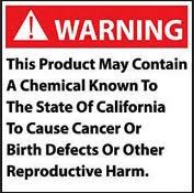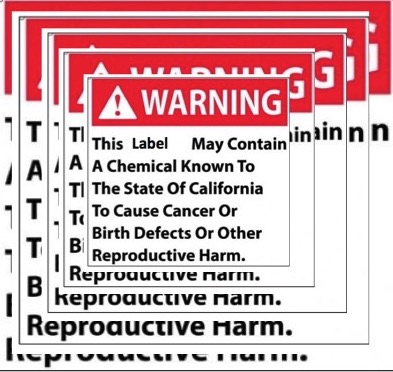As I've written many times before, plants do not exist to serve humans. They exist so they can exist. In order to do so, they become factories for all kinds of toxic chemicals to ward off whatever varmint is in the mood to eat them. Some of the most toxic chemicals on earth are made by plants (1). As do some of our most important medicines.
There is a natural chemical which is part of a huge family of chemicals called terpenes (See Essential Oils - Not What The Name Implies) called pulegone, which is found in a wide variety of plants, including peppermint, spearmint, blueberries, chamomile, black current...many others. It has a pleasant minty-lemony odor, so it is not surprising that it is used in perfumes. (If you use it in the lab be prepared to smell like a giant walking breath mint for days).
Here's the kicker. It is one of the 900 or so chemicals that have made their way onto a list of carcinogens and reproductive toxins, which was created by a special brand of madness (even for California) called the Safe Drinking Water and Toxic Enforcement Act of 1986 aka Proposition 65. If you live in California, where coffee both causes and prevents cancer, you cannot possibly escape this label:

It is everywhere:
- Parking garages
- Disneyland
- Hotel rooms
- Cars
- Gas stations
- Starbucks
- Lumber yards
- Bars and restaurants
- Hospitals (that must be really comforting)
Which brings up an existential question. Suppose the Proposition 65 labels themselves turned out to be carcinogens?!?!? Would we then see something like this?

And consider the following: Wood dust, orange oil, Valium, and salted fish are all on the Prop 65 list. Which suggests at the very least that one should not consume salty cod when performing finish carpentry while under sedation.
Back to pulegone and aromatherapy. Is a little of the stuff in the air really going to give you cancer? No way.
In California, pulegone is considered to be a carcinogen, but the carcinogenicity list there is insane. So it should not be surprising that the evidence for carcinogenicity of pulegone is sparse at best. From the European Medicines Agency:
- Genotoxicity
- Negative about 10 different varieties of the Ames test.
- "Marginally positive" in one of the tests at a very high concentration. Probably means nothing.
- Negative in the In-vivo micronucleus test in mice. (2)
- So, it's negative in everything but that's not enough. (3)
- The IARC working Group regards pulegone as non-genotoxic. (4)
- Carcinogenicity
- Three-month rat and mouse studies - no precancerous cell formation.
- Two-year rat carcinogenicity study - no increase in liver tumors
- In male mice treated with high-dose pulegone, liver tumors formed later than they did in non-pulegone-treated mice.
- In rats, the only treatment-related "cancers" were a small increase in two types of bladder cancer in male and female rats but only one type in the female rats. This experiment was done at a ridiculously high dose, about 25% that of the lethal dose.
Some observations:
- There are probably 50 bazillion chemicals on earth more likely than pulegone to give you cancer.
- Yet, California says that it will do so.
- This is the precise strategy that is used by chemical scare groups (NRDC, EWG, etc.) to make you think that a given chemical is a carcinogen when it is not.
- Funny how they're kinda quiet about this one, perhaps it's from a plant.
- "Crazy Joe" Mercola thinks that pulegone from peppermint oil increases athletic performance.
- By what must be nothing short of an astonishing coincidence "Crazy Joe" Mercola sells peppermint oil.
Photo: FunnyBeing.com
So, go ahead and "therapize" yourself with pulegone and/or the hundreds of other chemicals found in essential oils. They will neither hurt nor help you. But if you want to smell like a walking breath mint enjoy.
"Crazy Joe" will be pleased.
NOTES:
(1) See 99.99% Of The Pesticides We Eat Are Made By Plants
(2) The mouse micronucleus test is another way of measuring genotoxicity. The Ames test uses bacteria. The mouse micronucleus test uses bone marrow or certain blood cells.
(3) Negative is not sufficient: "It is questionable whether conventional genotoxicity tests performed with pulegone ... are appropriate to demonstrate the genotoxic potential of pulegone-associated liver-derived metabolites. It seems likely that liver-produced short-lived reactive metabolites may not reach the DNA in the conventional Ames test or bone marrow in the in-vivo mouse micronucleus test. More appropriate tests to assess the potential genotoxicity of pulegone are probably the Comet assay or a transgenic gene mutation assay for both liver and bladder."
In other words, keep looking until you find something.
(4) That sound you just heard was my head hitting the floor.


